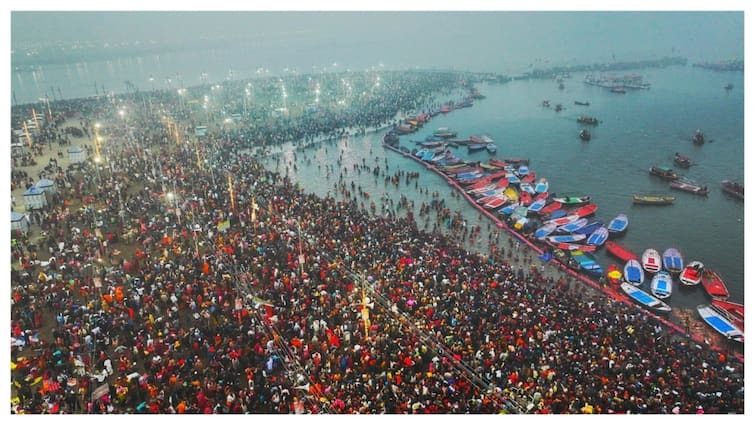
The grand Maha Kumbh Mela commenced in Prayagraj on January 13, attracting an astonishing crowd of nearly 1.5 crore devotees who took a holy dip on the auspicious occasion of Paush Purnima. Known as one of the largest religious gatherings in the world, the Maha Kumbh Mela continues to serve as a spiritual beacon for millions.
The first ‘Amrit Snan’ (holy bath) of the festival is taking place on Makar Sankranti, with various akharas (religious groups or sects) performing their sacred rituals at the Sangam—the confluence of the Ganga, Yamuna, and the mystical Saraswati rivers.
The Ritual of Amrit Snan
The Amrit Snan for the akharas is an elaborate and well-coordinated ritual, scheduled to last for approximately 10 hours. The administration has meticulously planned the sequence of baths for 13 akharas to ensure smooth proceedings.
The Order of Snan
First Batch
Shri Panchayati Akhara Mahanirvani
Shri Shambhu Panchayati Atal Akhara
These two akharas began the Amrit Snan and were allocated 40 minutes each to perform their holy baths.
Second Batch
Shri Taponidhi Panchayati Shri Niranjani Akhara
Shri Panchayati Akhara Anand
These akharas followed, continuing the spiritual ritual in harmony.
Third Batch (Sanyasi Akharas)
Shri Panchdashnam Juna Akhara
Shri Panchdashnam Aawahan Akhara
Shri Panchagni Akhara
Bairagi Akharas
Among the three Bairagi Akharas, the schedule was as follows:
All India Shri Panch Nirmohi Ani Akhara began at 9:40 AM, reaching the ghat at 10:40 AM, and completed its bath by 11:10 AM.
All India Shri Panch Nirvani Ani Akhara started at 11:20 AM and completed its bath by 12:50 PM.
Udasin Akharas
The final batch of Udasin Akharas followed:
Udasin Shri Panchayati Naya Udasin Akhara began at 12:15 PM.
Shri Panchayati Akhara Naya Udasin and Nirvana Akhara took their turn at 1:20 PM.
Shri Panchayati Nirmal Akhara was the last to perform the Amrit Snan.
Key Snan Dates of Maha Kumbh Mela
The Maha Kumbh Mela spans several key dates that hold profound spiritual significance:
January 14: Makar Sankranti
January 29: Mauni Amavasya
February 3: Basant Panchami
February 12: Maghi Purnima
February 26: Maha Shivaratri (Concluding Day)
These dates represent pivotal moments for devotees to take holy dips and participate in spiritual rituals.
Significance of Maha Kumbh Mela
The Maha Kumbh Mela is a celebration of faith, unity, and spirituality. Held every 12 years, it is regarded as the world’s largest religious gathering. The festival brings together saints, pilgrims, and devotees from all walks of life, offering them an opportunity to cleanse their sins and seek divine blessings.
The rituals, including the Amrit Snan, signify purification and renewal, making it a spiritually transformative experience for millions.
Read More: Nitin Gadkari Attended Event with Hamas Chief Hours Before Assassination

 Share
Share



